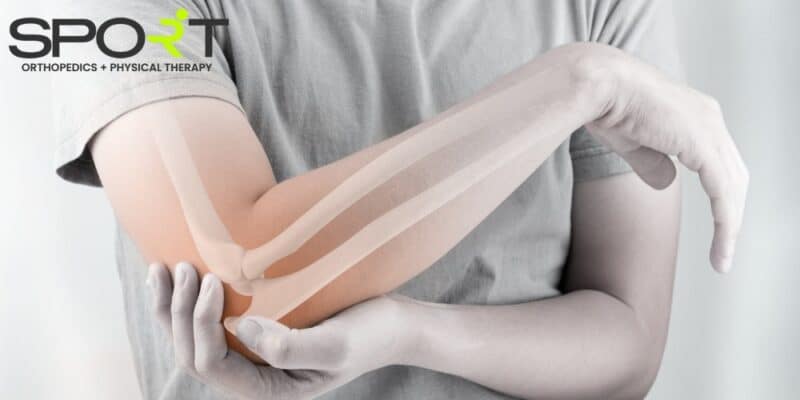
What Is Bursitis?
Bursitis occurs when the small, fluid-filled sacs that cushion our bones (bursa) become irritated and inflamed. The inflamed bursa causes pain, aching, and stiffness in the affected joint, which can greatly affect one’s range of motion.
What Is the Difference Between Arthritis and Bursitis?
The main difference between bursitis and arthritis is the parts of the body that they affect. People develop bursitis when the bursa in their joints become inflamed. Bursitis is generally a temporary condition, although it is possible for people to have chronic bursitis. Arthritis, on the other hand, affects the bones, joints, and cartilage of the body. It causes irreversible damage to these structures, which can result in long term pain and joint problems.
What Is the Difference Between Tendinitis and Bursitis?
While bursitis affects the bursa in the body, tendinitis affects the tendons. Both conditions can cause pain and joint stiffness, and they often result from overuse. Additionally, either condition can be a short term problem, or a chronic condition.
Symptoms of Bursitis

When you see your doctor about your symptoms, they will likely perform a physical exam to assess the basic symptoms. Patients with bursitis often experience the following symptoms in the affected area.
- Inability to move the joint
- Redness or swelling of the affected joint
- Pain when you move or press on the affected area
- Achiness or stiffness of the joint
- Fever
- Sharp, shooting pain
Many patients find that repetitive tasks worsen the pain in the affected bursa, and can often increase the stiffness in the joint.
Where Does Bursitis Occur?
Bursitis can occur in several different joints of the body. However, certain locations are naturally more prone to developing bursitis than others. Some of the most common locations for bursitis include the shoulder, elbow, hip, and knee joints. Other locations that may develop bursitis include the heel, the kneecap, and the base of the big toe. Depending on the location of the condition, each joint can develop a different type of bursitis.
Types of Bursitis
As we mentioned before, swollen bursa can cause pain in several different joints. Each type of bursitis has its own name and tends to result from different causes. We outline some of the most common types of bursitis below.
Elbow Bursitis
When the olecranon bursa in the elbow become inflamed, this is known as elbow bursitis. The olecranon bursa are located between the skin and bones in the elbow joint. The two most common causes of elbow bursitis are sudden injury and applying too much pressure to the elbow for too long.
Knee Bursitis
Trochanteric Bursitis
Septic Bursitis
Aseptic Bursitis
Achilles Tendon Bursitis
Hip Bursitis
Shoulder Bursitis
What Causes Bursitis?

As with other musculoskeletal and skin diseases, bursitis has common causes and risk factors. The most common causes of bursitis include the following.
- Not maintaining a healthy weight
- Repetitive motions
- Having inflammatory arthritis
- Maintaining positions that put too much pressure on the bursa
- Gout
- Having infected bursa
Bursitis Risk Factors
While technically anyone can develop bursitis, the following risk factors can increase one’s chances of developing the painful condition.
- Older age
- Certain jobs or hobbies, such as those that require repetitive motion
- Having certain medical conditions, such as diabetes, rheumatoid arthritis, and gout
Certain types of bursitis can develop when we do not relieve pressure from a particular joint. For example, think of a carpet layer. They spend a lot of time kneeling for their jobs, so they are at a heightened risk of developing bursitis in their knees.
How Is Bursitis Diagnosed?
In order to diagnose bursitis, we may use a combination of imaging tests, lab tests, and physical examinations of the painful joint. First, we will take a medical history and perform a physical exam, manipulating the affected joint by hand. Then, we may order an ultrasound or MRI to confirm the condition. X-rays are rarely used, as they mainly help to rule out other sources of pain. Lab and blood tests taken from the inflamed bursa can also help to diagnose the source of your pain. This is particularly true if infected bursa are causing pain in your joint.
How Is Bursitis Treated?
Most cases of bursitis are fairly mild, which means that conservative methods tend to help tremendously. Begin with getting plenty of rest, taking pain relievers when needed, and applying ice to the joint to reduce swelling. If conservative, at-home methods don’t relieve pain from the condition, we may recommend the following treatments.
- Pain medicines combined with antibiotics if the condition is caused by an infection
- Physical therapy and exercise of the affected area
- Corticosteroid injections to relieve pain and swelling
- The use of an assistive device, such as a cane, to reduce pressure on the joint while walking
- In rare cases, surgery is necessary in order to drain an inflamed bursa
How to Prevent Bursitis
There are a few ways in which you can lessen your chances of developing bursitis. Generally, we recommend that our patients take the following steps to alleviate their symptoms and to reduce the risk of bursitis in their joints.
- Before physical activities, stretch and warm up your joints adequately.
- When starting new exercises or sports, gradually increase your level of activity, rather than starting with a demanding level from the start.
- If an activity causes you pain, take a break and refrain from doing that activity.
- Especially when you’re doing repetitive tasks, take frequent breaks.
- Practice proper posture with all parts of your body. This lessens the strain placed on your joints.
- Uses cushions, such as elbow pads or knee pads, for the joints that are most at risk.
When to Call Your Doctor About Bursitis
In some cases, bursitis can progress to the point where you may need immediate medical attention. If you begin to experience the following symptoms, we strongly recommend that you contact your primary care doctor or one of our orthopedic specialists as soon as possible.
- Joint pain lasts longer than two weeks
- Feeling warmth or seeing redness on the joint
- Having an unusual level of swelling around the joint
- Sudden inability to move the joint
- Fever
- Pain that radiates to nearby areas of the body
Contact SPORT Orthopedics + Physical Therapy Today
At SPORT Orthopedics + Physical Therapy, we take great pride in offering a wide array of treatment options for our patients. Our orthopaedic surgeons have extensive experience diagnosing and treating bursitis, so you can rest assured that you’ll be in good hands with our providers. We can not only help relieve pain from your condition, but we can also show you how to avoid and prevent bursitis in the future. To schedule an appointment with an orthopedic surgeon in Dallas, please call our office today at 469-200-2832.












